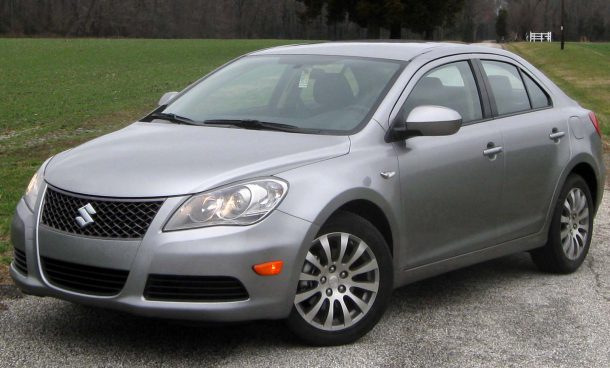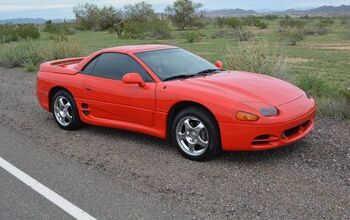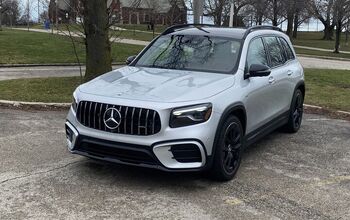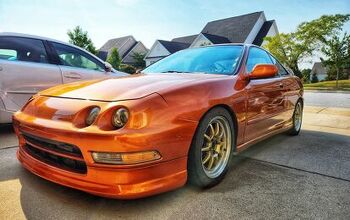QOTD: What's Your Favorite Automotive Flop?

Last week, I asked about vehicles which managed to turn up the Suck Dial between generations. The overwhelming response to this question compared to the opposite question asked a week earlier (about generational improvements) showed me how you all love being negative and trashing cars.
Thus, about six weeks ago, the genesis for today’s question was put into print. At that time I asked about your favorite automotive success story. But today we’re going to be much, much more negative.
Tell me your favorite automotive flop.
By definition, a flop in the automotive world doesn’t live long enough to warrant a second generation. It’s a one-and-done, and the world is better for it. History is littered with automotive flops, and in the interest of summation I will credit those flops to three major and overarching reasons:
- Due to the development lag of a brand new model, a manufacturer releases a vehicle at an inopportune time. Having misjudged the strength and/or duration of whichever market/economic/international forces led them to develop said model, the realization of the error came too late — or never.
- A manufacturer gets so wrapped up in what they think they wish to accomplish, they focus group a model to death. The resulting product is niche, and not appealing or useful to enough people, for various reasons. The car answers a question nobody asked.
- A vanity project by someone in charge at the company pushes past rhyme, reason, and red tape on the way to the factory floor.
Even as I made that extensive three-point list above, I came up with more great historical examples in my head. But alas, it does not change my selected example of a flop, which I think is an excellent representation of item 2 above. And it’s not the Kizashi, sorry. It’s something much worse!
But it does come from the same manufacturer. It’s the kooky and relatively terrible Suzuki X-90 SUV. Succeeding at being the only entry ever into the “subcompact T-top 2-seat 4×4 SUV with trunk” market, surely some focus groups had a field day over in Japan.
Built on the Sidekick platform (which most North Americans know as the Geo Tracker), it could certainly not be considered a replacement of the recently departed and rock-crawling-mudder favorite, the Samurai. And yet it was not an early CUV, with real rear-wheel drive underpinnings and a real frame.
The T-tops added some fun convertible flair (and visibility of the Solo cup inspired interior), while the two passenger capacity and tiny trunk meant you couldn’t haul people or things with your utility vehicle.
Power came from a very small 1.6-liter engine, also borrowed from the Tracker/Sidekick — but only Canadian market ones.
The X-90 was a complete flop, and lingered on the market from 1995 through 1998. According to Wikipedia, just 7,205 X-90s were sold in the United States. Most of those eventually found new life as remodeled Red Bull cars, before being replaced by new Minis later in the decade. Shockingly, there was not a second generation.
Let’s hear your favorite flop of a vehicle.
[Images: eBay, via NY Daily News]

Interested in lots of cars and their various historical contexts. Started writing articles for TTAC in late 2016, when my first posts were QOTDs. From there I started a few new series like Rare Rides, Buy/Drive/Burn, Abandoned History, and most recently Rare Rides Icons. Operating from a home base in Cincinnati, Ohio, a relative auto journalist dead zone. Many of my articles are prompted by something I'll see on social media that sparks my interest and causes me to research. Finding articles and information from the early days of the internet and beyond that covers the little details lost to time: trim packages, color and wheel choices, interior fabrics. Beyond those, I'm fascinated by automotive industry experiments, both failures and successes. Lately I've taken an interest in AI, and generating "what if" type images for car models long dead. Reincarnating a modern Toyota Paseo, Lincoln Mark IX, or Isuzu Trooper through a text prompt is fun. Fun to post them on Twitter too, and watch people overreact. To that end, the social media I use most is Twitter, @CoreyLewis86. I also contribute pieces for Forbes Wheels and Forbes Home.
More by Corey Lewis
Latest Car Reviews
Read moreLatest Product Reviews
Read moreRecent Comments
- ToolGuy If these guys opened a hotel outside Cincinnati I would go there to sleep, and to dream.
- ToolGuy Michelin's price increases mean that my relationship with them as a customer is not sustainable. 🙁
- Kwik_Shift_Pro4X I wonder if Fiat would pull off old world Italian charm full of well intentioned stereotypes.
- Chelsea I actually used to work for this guy
- SaulTigh Saw my first Cybertruck last weekend. Looked like a kit car...not an even panel to be seen.







































Comments
Join the conversation
How about the 2004-2008 Chrysler Pacifica? A decent idea a little ahead of its time sunk by a combination of faulty engine cradles in the 04-06s, ill-advised engineering foisted upon it by Daimler, and an initial decision to push upmarket which was more than most were interested in paying for a pentastar badge.
Two that no one has mentioned: Chevrolet Orlando: typically tardy GM response to the Rondo and Mazda5, styled like a giant bland Kia Soul combined with a tortoise, with one of the worst names in recent memory. Only sold in Canada, naturally, to minimize any possible profit. It was one of the first manual vehicles I ever drove (so yeah, I guess the fact it was available with one is a positive to you guys). Hyundai Veracruz: Profoundly blobby and ahead of its time, since Hyundai replaced it with the 3-row Santa Fe to much greater success. The rear end is one of the worst SUV/CUV rear end designs of all time in my opinion.